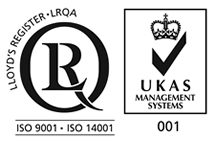
Main Products
Copyright 1998-2025 Firmetal Group All Rights Reserved. | Sitemap
Titanium-niobium alloy powder is composed of titanium and niobium. Niobium metal features a unique combination of high strength, low density, biocompatibility, corrosion resistance, fatigue resistance and high-temperature creep resistance.
Titanium-niobium alloys are part of a broader range of titanium intermetallic materials and possess superior physical, chemical and mechanical properties compared to pure titanium. Adding niobium as an alloying element can enhance certain properties and titanium-niobium alloys can be customized for specific applications.
Metal bipolar plates are the key to the development of compact and lightweight proton exchange membrane fuel cells. However, most of them have encountered challenges in terms of durability and conductivity in the fuel cell environment. In this study, a niobium-titanium (Nb-Ti) alloy/platinum (Pt) coating was deposited on the SS316L plate, enhancing its corrosion resistance, surface wettability, electrical conductivity and thermal conductivity, while reducing the interface contact resistance. Furthermore, after adding the Nb-Ti alloy /Pt coating to SS316L, the in-plane conductivity of SS316L increased by 42.6%, and the thermal conductivity increased by 3.5%, exceeding the technical targets of the US Department of Energy in these categories. These results indicate that the application of Nb-Ti alloy /Pt coated SS316L bipolar plates in fuel cells is feasible.
Most practical Nb-Ti superconducting materials are simple binary alloys, containing 35% to 55% Nb. Some tantalum and zirconium can be added to improve the superconducting performance. Due to the reason of superconducting stability, Nb-Ti superconducting materials often use pure copper, pure aluminum or copper-nickel alloys as the matrix materials, and interlay multiple Nb-Ti fine cores to form composite multi-core superconducting materials. A superconducting wire can contain dozens to tens of thousands of Nb-Ti cores, with the minimum core diameter reaching 1μm. In addition, depending on the application scenarios, it is often necessary to twist and swap the multi-core wires to reduce losses and enhance electromagnetic stability.